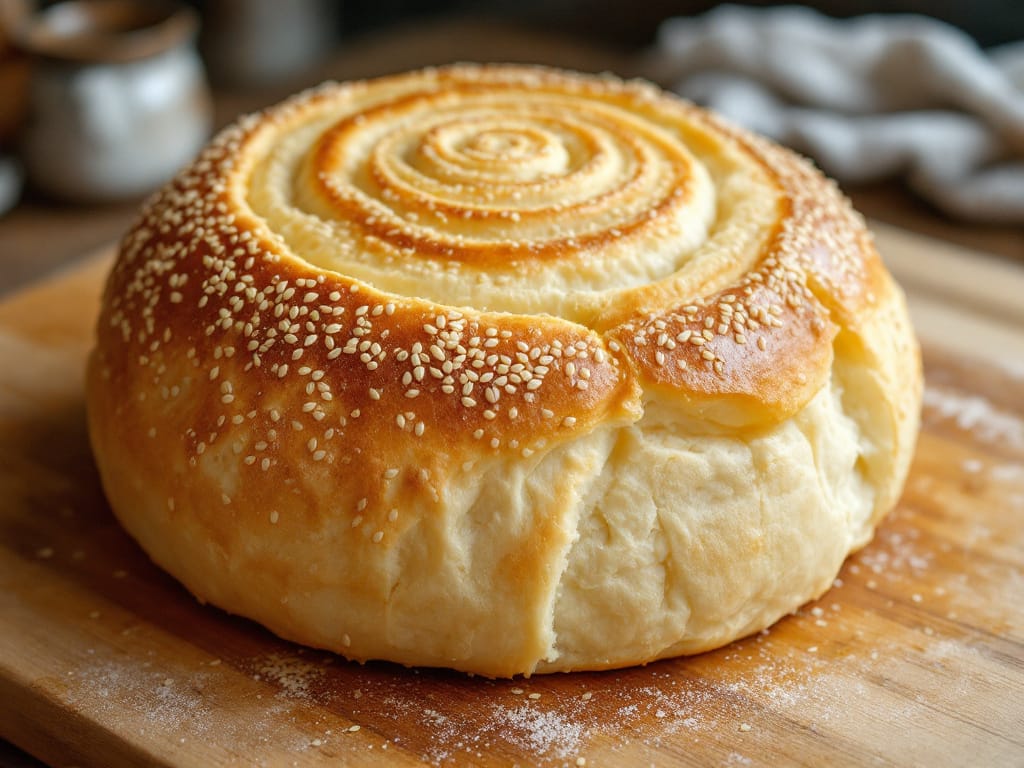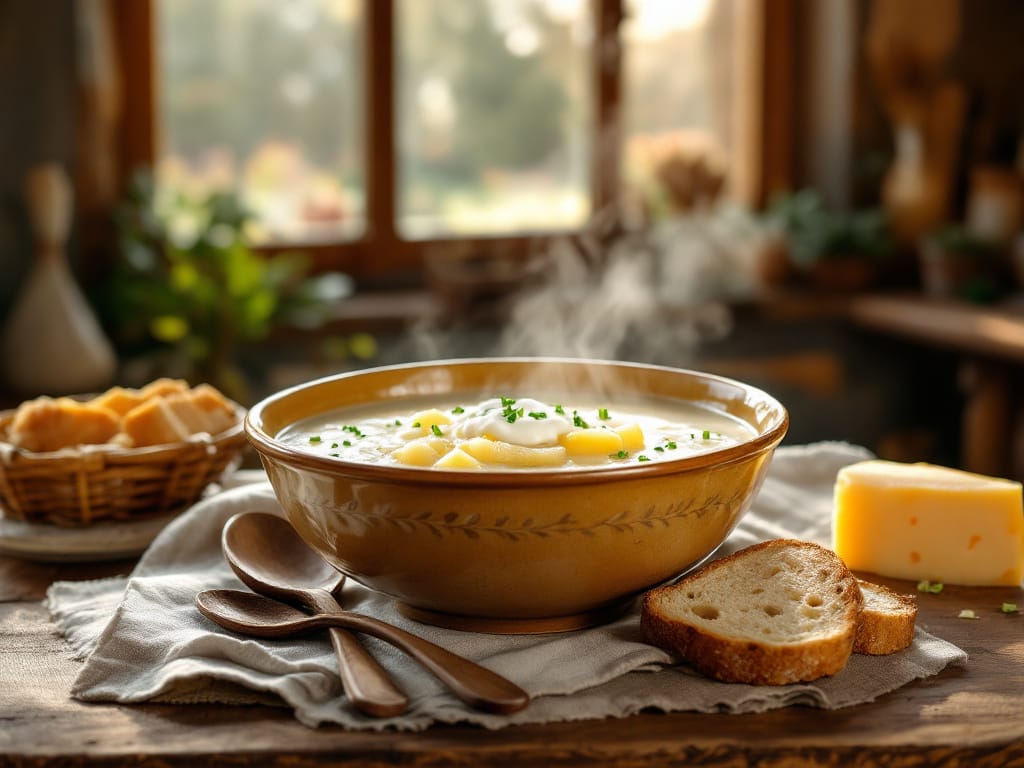*Japanese milk bread, also known as Shokupan, is a soft, fluffy, and slightly sweet bread that has gained popularity worldwide for its unique texture and versatility. Its pillowy softness and lightly sweet flavor make it a favorite for everything from sandwiches to desserts. This article explores the origins, ingredients, and step-by-step process to make this beloved bread at home.
What Is Japanese Milk Bread?
Japanese milk bread, or Shokupan, is a type of enriched bread renowned for its pillowy softness and slightly sweet flavor. Its unique texture is achieved using the Tangzhong method, a technique that involves pre-cooking a portion of the flour and liquid to form a roux. This pre-cooked mixture locks in moisture, resulting in a loaf that remains soft, fluffy, and fresh for longer than traditional bread recipes.
Beyond its physical qualities, Japanese milk bread holds deep cultural significance in Japan. Often seen as a symbol of warmth and comfort, it plays a central role in everyday meals, from breakfast to teatime treats. Whether enjoyed plain, toasted, or as a sandwich base, Shokupan is a staple that embodies the artistry and innovation of Japanese baking.
For a deeper understanding of its cultural importance and culinary evolution, explore How to Make Milk Bread.
Origins of Japanese Milk Bread
The journey of Japanese milk bread, or Shokupan, traces back to the late 19th century, a time when Western influences began permeating Japanese culture during the Meiji Restoration. Western baking techniques were introduced, and Japanese bakers gradually adapted these methods to suit local tastes and ingredients.
By the 20th century, Shokupan had firmly established itself as a household staple in Japan. Its light, slightly sweet flavor and unparalleled softness made it a versatile option for both traditional and modern dishes.
A significant milestone in the evolution of Japanese milk bread was the incorporation of the Tangzhong method. This technique, originating in China, involves cooking a portion of the flour and liquid into a roux. The Tangzhong method transformed the bread-making process by enhancing moisture retention, leading to the iconic soft and fluffy texture that defines Shokupan today.
Japanese milk bread reflects a fusion of global culinary practices and local innovation, making it a quintessential example of Japan’s ability to refine and perfect foreign influences.
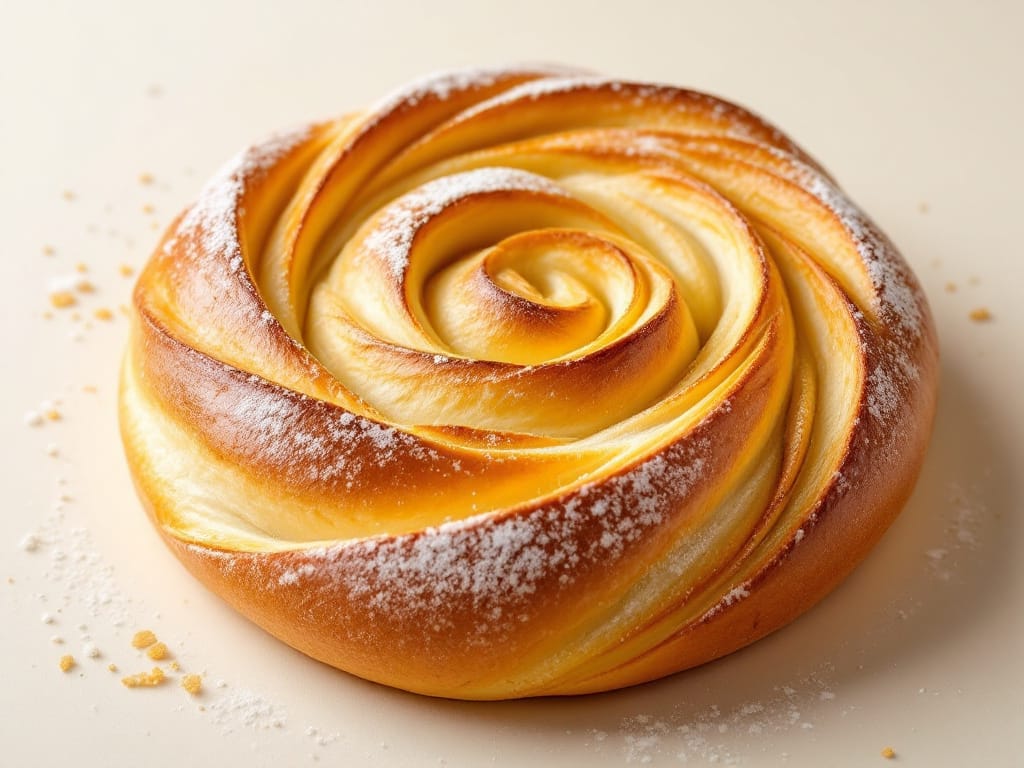
Essential Ingredients for Japanese Milk Bread
The delicate texture and irresistible flavor of Japanese milk bread come from a careful balance of ingredients. Each plays a vital role in creating the signature soft and fluffy loaf:
1. Flour
Bread flour, with its higher protein content, is essential for developing the gluten structure that gives the bread its elasticity and chew. Avoid using all-purpose flour, as it may result in a denser loaf.
2. Milk
Whole milk is preferred for its richness and creamy flavor. It not only enhances the bread’s taste but also contributes to the moist and tender crumb. For variations, you can use plant-based milk, though it may slightly alter the texture.
3. Butter
Unsalted butter adds tenderness and a subtle richness to the bread. It’s incorporated into the dough to achieve a velvety crumb. Make sure it’s softened for easy mixing.
4. Sugar
A small amount of sugar gives the bread its characteristic mild sweetness. It also feeds the yeast, aiding in the rising process. For a lower-sugar option, consider honey or other natural sweeteners.
5. Salt
Salt enhances the overall flavor and balances the sweetness of the dough. Without it, the bread may taste bland. Be precise with the quantity, as too much can inhibit yeast activity.
6. Yeast
Active dry yeast or instant yeast is used to help the dough rise. Both work well, but instant yeast requires no prior activation, making it slightly more convenient. Ensure your yeast is fresh for optimal results.
7. Tangzhong
Tangzhong, a roux made by cooking flour with water or milk, is the secret ingredient that sets Japanese milk bread apart. It improves moisture retention, giving the bread its trademark softness and extending its shelf life. Preparing Tangzhong requires a few extra minutes but makes a world of difference in the final product.
By mastering these essential ingredients, you can recreate the magic of Japanese milk bread in your own kitchen. For detailed measurements and substitutions.
Step-by-Step Guide: How to Make Japanese Milk Bread
Tools Needed
- Stand Mixer or Mixing Bowl: For kneading the dough. A stand mixer with a dough hook attachment simplifies the process.
- Rolling Pin: To shape the dough evenly.
- Loaf Pan: A standard 8.5 x 4.5-inch loaf pan works best.
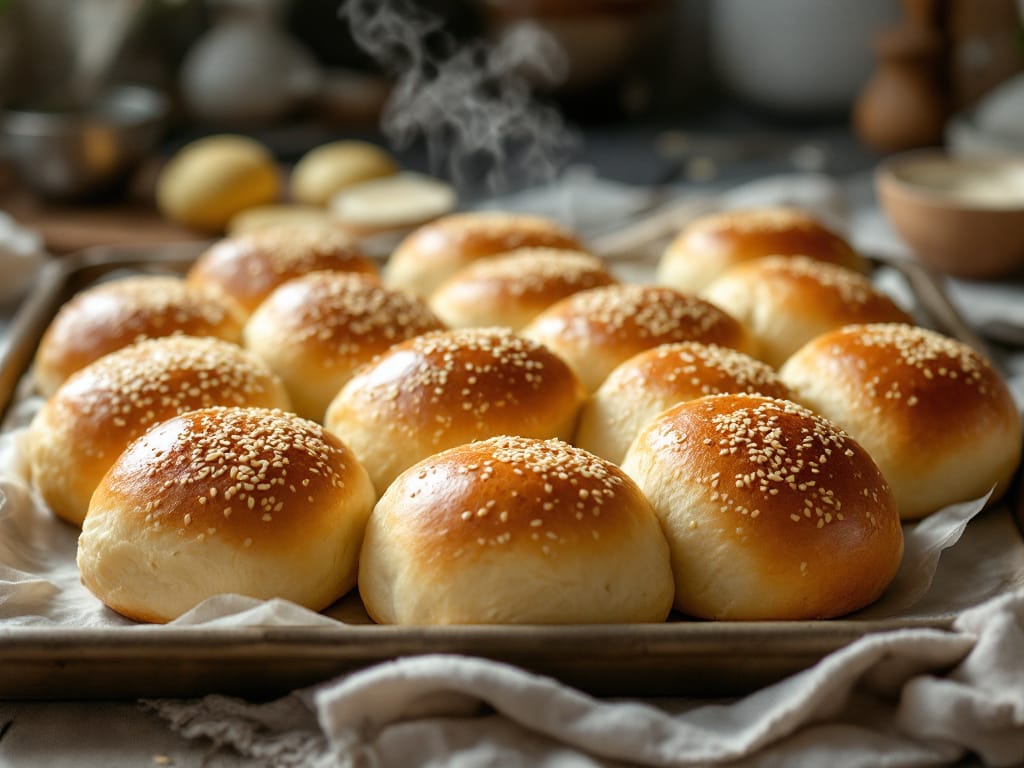
Instructions
1. Prepare the Tangzhong
- In a small saucepan, combine 2 tablespoons of bread flour with ½ cup of water or milk.
- Cook over medium heat, stirring constantly, until the mixture thickens into a smooth paste. This typically takes 2–3 minutes.
- Remove from heat and allow the Tangzhong to cool to room temperature.
Tip: Use a whisk to avoid lumps and ensure even cooking.
2. Mix the Dough
- In a large mixing bowl (or stand mixer), combine the Tangzhong, 3 cups of bread flour, 2 tablespoons of sugar, 1 teaspoon of salt, 2 teaspoons of yeast, ½ cup of milk, and 1 egg.
- Mix until the ingredients come together into a shaggy dough.
- Add 3 tablespoons of softened unsalted butter and knead until the dough is smooth and elastic (about 8–10 minutes by hand or 5–7 minutes in a stand mixer).
Tip: The dough should be slightly sticky but not overly wet. Add a tablespoon of flour if it’s too sticky.
3. First Proof
- Transfer the dough to a lightly greased bowl and cover it with a damp cloth or plastic wrap.
- Let it rise in a warm place until it doubles in size, which usually takes 1–2 hours.
Tip: To speed up proofing, place the bowl in an oven with the light on for a slightly warmer environment.
4. Shape the Dough
- Punch down the risen dough to release excess air.
- Divide it into three or four equal portions, depending on the desired shape of your loaf.
- Roll each portion into a smooth ball, then flatten into an oval. Fold the edges inward and roll tightly into a cylinder.
- Place the shaped dough pieces seam-side down into a greased loaf pan.
5. Final Proof
- Cover the loaf pan with plastic wrap or a damp cloth and allow the dough to rise again until it reaches the rim of the pan. This takes about 40–60 minutes.
Tip: Be patient and avoid over-proofing, as it can cause the bread to collapse during baking.
6. Bake
- Preheat your oven to 350°F (175°C).
- Brush the top of the dough with an egg wash (1 egg beaten with 1 tablespoon of water) for a golden, glossy finish.
- Bake for 25–30 minutes, or until the top is golden brown and the loaf sounds hollow when tapped.
Tip: Use a kitchen thermometer to ensure the internal temperature of the bread reaches 190°F (88°C).
7. Cool
- Remove the loaf from the pan and place it on a wire rack to cool completely before slicing.
Tip: Slicing while hot can cause the bread to tear. Patience pays off here!
By following these steps, you’ll achieve a perfectly soft and fluffy loaf of Japanese milk bread every time. Would you like suggestions for troubleshooting common issues or additional tips for baking success?
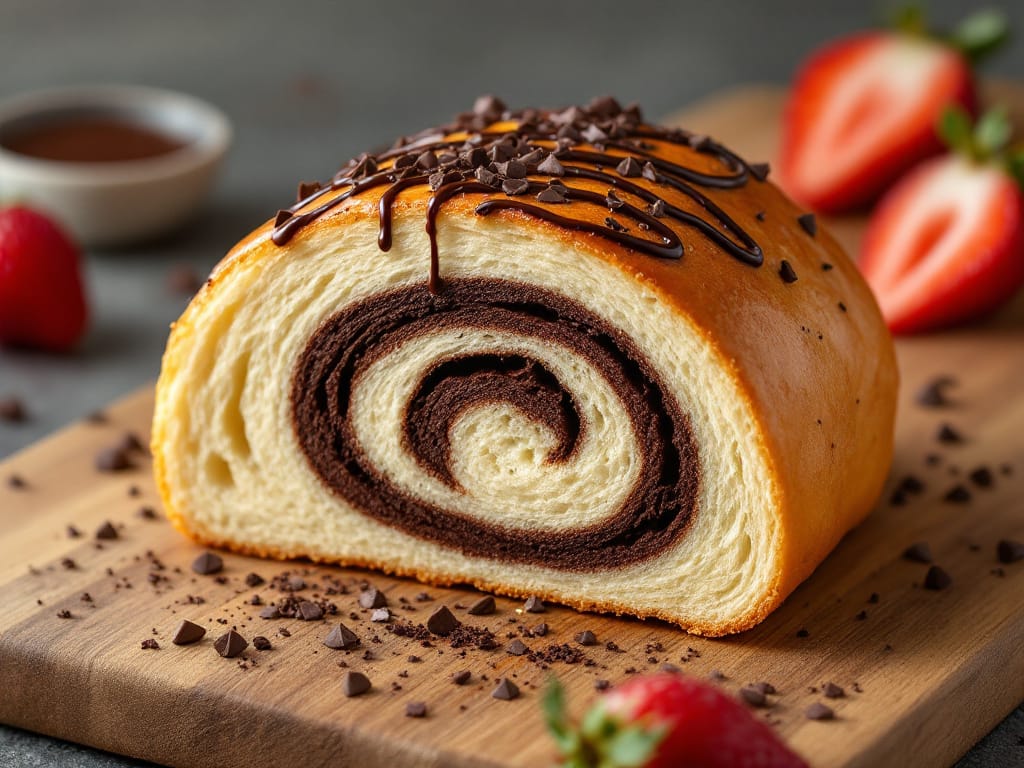
Variations of Japanese Milk Bread
The versatility of Japanese milk bread allows for endless creativity in flavors, shapes, and presentations. Here are some popular variations to try:
1. Filled Loaves
- Add a delicious surprise to each slice by incorporating sweet or savory fillings.
- Sweet Options: Red bean paste (anko), custard, or chocolate chips are classic choices. These fillings pair wonderfully with the bread’s lightly sweet flavor.
- Savory Options: Consider fillings like cheese, ham, or pesto for a savory twist.
How to Add Fillings:
Flatten the dough during the shaping step, spread the filling evenly, and roll it up tightly before placing it in the loaf pan.
2. Buns
- Shape the dough into individual portions to create rolls or buns that are perfect for single servings.
- Classic Dinner Rolls: Soft, fluffy rolls that pair well with butter or jam.
- Stuffed Buns: Fill the center of each dough ball with options like curry, meat, or sweet bean paste.
Why Make Buns:
Buns are ideal for picnics, lunchboxes, or as quick grab-and-go snacks.
3. Fusion Flavors
- Infuse your bread with unique flavors inspired by different cuisines or personal preferences.
- Matcha: Add powdered green tea for a vibrant color and earthy flavor.
- Black Sesame: Incorporate ground black sesame seeds for a nutty and aromatic twist.
- Cheese: Mix shredded cheese into the dough or sprinkle on top before baking for a savory delight.
Tips for Fusion Flavors:
Adjust the sugar and salt to balance the added ingredients, especially for savory variations.
4. Pull-Apart Bread
- Arrange dough balls closely in a round or rectangular pan. When baked, the loaf can be pulled apart easily into individual pieces.
- Enhance with toppings like garlic butter, herbs, or cinnamon sugar.
5. Braided Loaf
- Divide the dough into three strands, braid them together, and tuck the ends underneath before baking.
- This variation adds an elegant visual element and is perfect for gifting or festive occasions.
Why Is Japanese Milk Bread So Popular?
Japanese milk bread, or Shokupan, has gained immense popularity worldwide due to its unique characteristics and adaptability. Its appeal can be attributed to several factors:
1. Unmatched Softness
Compared to other enriched breads like brioche or challah, Japanese milk bread is significantly softer and fluffier. This distinct texture is achieved using the Tangzhong method, which retains moisture and extends freshness.
2. Versatility
Its mild sweetness and neutral flavor make it suitable for various culinary applications. Whether used for sandwiches, toast, or desserts, it seamlessly adapts to any role.
3. Home Baking Boom
In recent years, there has been a surge in home baking, driven by a desire for comfort food and creative kitchen projects. Japanese milk bread has become a favorite for its achievable yet rewarding recipe.
4. Cultural and Aesthetic Appeal
Shokupan’s cultural significance and simple, elegant appearance have also contributed to its popularity. It embodies a blend of Japanese craftsmanship and universal comfort.
Nutritional Information
Understanding the nutritional profile of Japanese milk bread can help you enjoy it as part of a balanced diet:
- Calories: Approximately 140 per slice (based on a standard recipe with Tangzhong).
- Carbohydrates: Primarily derived from bread flour and sugar, providing energy.
- Protein: Moderate, due to the high-protein bread flour and eggs in the dough.
- Fats: From butter, contributing to the tender texture.
- Fiber: Minimal, unless whole-grain flour is used.
Healthier Options
For a lighter version, consider:
- Substituting sugar with natural sweeteners like honey or maple syrup.
- Using whole-grain bread flour for added fiber and nutrients.
- Reducing butter or replacing it with a plant-based alternative.

